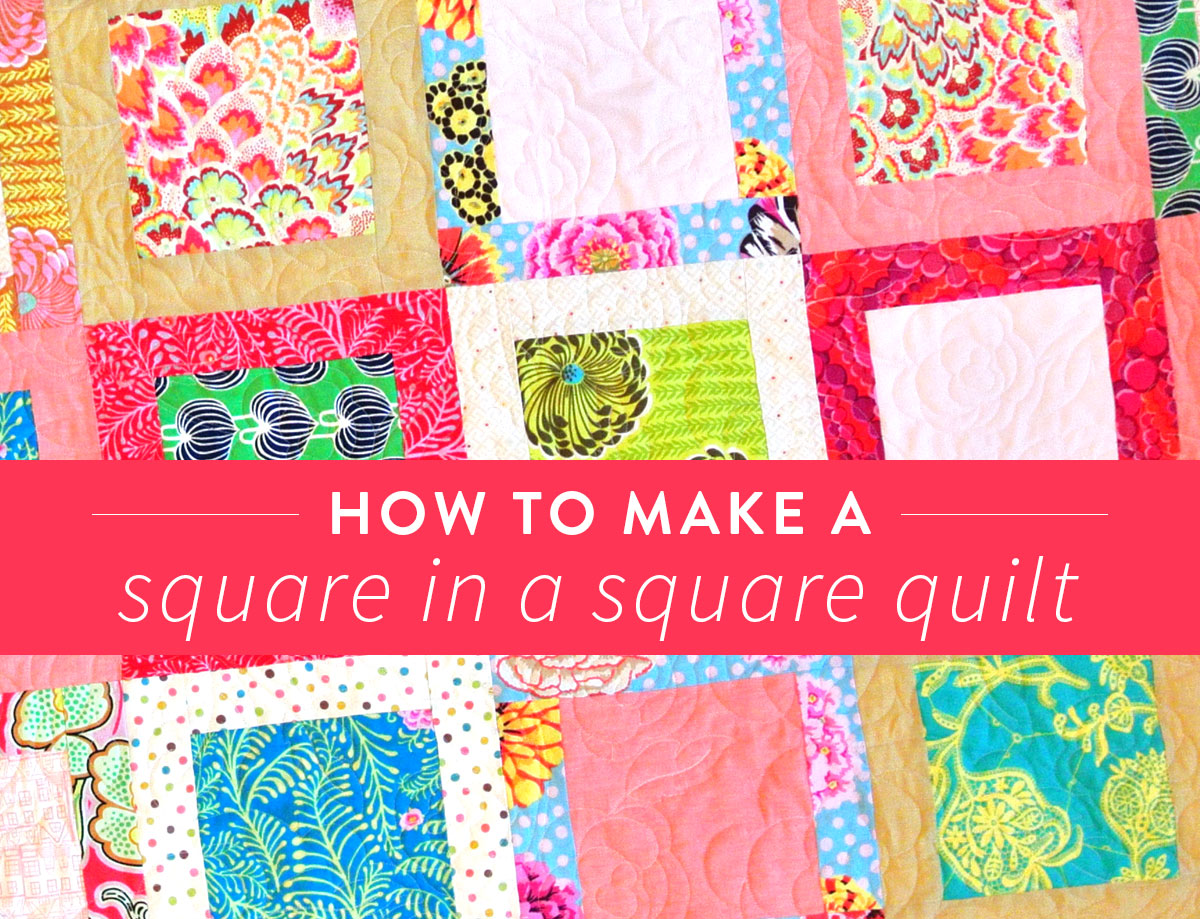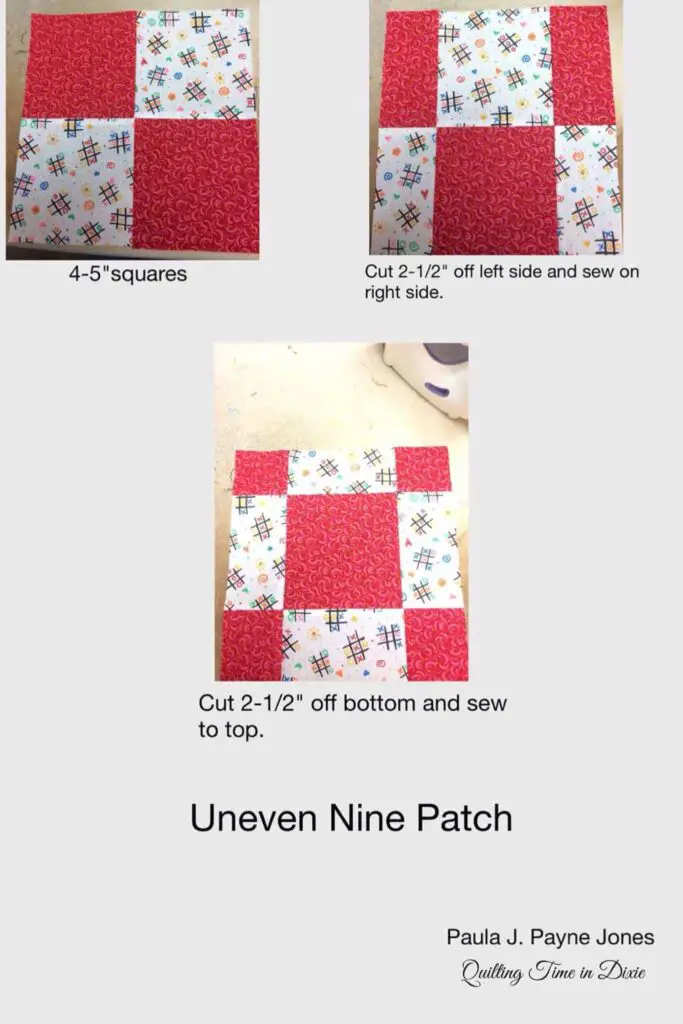Are you a quilter who struggles with making your quilts look professional? If so, you know that it can be difficult to make sure your quilt blocks are perfectly square. Fortunately, there is an easy way to square up your uneven quilt blocks and give your quilts a professional finish. In this article, we will discuss how to easily square up uneven quilt blocks and give your quilts a professional finish.
What Causes Uneven Quilt Blocks?

Uneven quilt blocks can be caused by several different factors, including:
- Inaccurate cutting – This can be caused by using a dull rotary cutter, using a ruler that is not accurate, or not cutting with a straight edge.
- Inaccurate piecing – This could be due to a lack of accurate seam allowance, or the fabric pieces not being correctly matched before sewing.
- Inaccurate pressing – This may cause one side of the block to be larger than the other, or cause the seams to be offset.
- Inaccurate quilting – This can cause your quilt blocks to be off-balance or uneven.
Knowing what causes uneven quilt blocks is the first step in learning how to fix a quilt that is not square. Once the cause of the issue is identified, it can be addressed and the quilt blocks can be squared up.
How to Square Up Uneven Quilt Blocks

How to Fix a Quilt That Is Not Square
Squaring up a quilt block means to make the edges of the block straight and even. This can be done by measuring and cutting the edges, or by using the quilting process itself to square up the block. If your quilt is not square, it is likely due to uneven cutting or piecing of the blocks. To fix this, use a ruler to measure the blocks and make sure all the sides are equal. If the sides are not equal and the quilt is not square, use a rotary cutter to trim the sides of the block until they are even and the quilt is square.
How to Square Up a Pieces Quilt Block
Squaring up a pieces quilt block involves cutting the fabric so that each piece is the same size. The best way to do this is to measure the pieces and then cut them to the same size, ensuring that all the pieces are even. If the pieces are not even, the quilt will not be square.
How to Square Up Quilt Blocks from the Center
Squaring up quilt blocks from the center involves making sure that the center of the quilt is square. To do this, measure the center of the quilt and make sure that it is a square. If it is not, use a rotary cutter to trim the sides of the quilt until they are even and the quilt is square.
How to Square Up a Small 4Patch Quilt Block
Squaring up a small 4patch quilt block is done by making sure that the four corners of the quilt are all even and the same size. To do this, measure the four corners and make sure that they are all the same size. If they are not, use a rotary cutter to trim the sides of the quilt until the corners are even and the quilt is square.
No matter why your quilt blocks are not square, measuring and cutting the edges or using the quilting process to square up the block can help you achieve the desired result. Taking the time to make sure your quilt blocks are square is an important part of quilting and will ensure that your quilt looks great.
Tips to Keep Your Quilt Blocks Square

1. Use a correct seam allowance. To ensure your quilt blocks are square, you need to use the correct seam allowance. A standard seam allowance is usually 1/4 inch. A larger seam allowance will make your quilt blocks bigger, while a smaller seam allowance will make your quilt blocks smaller.
2. Use a ruler or template. Using a ruler or template to measure each piece of fabric before sewing it together will guarantee that all the pieces are the same size. You can also use a quilting ruler or quilting template to help you cut the pieces accurately.
3. Press your seams. Pressing your seams open or to one side will help to keep your quilt blocks square. Make sure you use a steam iron and press the seams on the wrong side of the fabric.
4. Trim your quilt blocks. If your quilt blocks are too big or have uneven edges, you can trim them with a rotary cutter. Make sure you use a ruler to ensure that the blocks are square.
5. Square up your quilt blocks. After you have trimmed your quilt blocks, you can use a square-up ruler to square up the edges. This will help to ensure that all of your quilt blocks are the same size and shape.
6. Use a walking foot. A walking foot is a special sewing machine foot that will help to keep the fabric from shifting as you sew the quilt blocks together. This will help to keep the blocks from becoming distorted and will help to keep them square.
7. Pin your quilt layers. Pinning your quilt layers together will help to keep the blocks from shifting as you quilt them. Make sure you use enough pins to keep the layers in place.
8. Sew slowly and accurately. Make sure you sew slowly and accurately when sewing your quilt blocks together. This will help to keep your blocks square and ensure that they are all the same size.
Common Mistakes to Avoid
- Not Measuring Accurately: When squaring up your quilt blocks, it is important to take accurate measurements to ensure that the blocks are of the same size. Measuring inaccurately can lead to blocks of different sizes, which will make it difficult to get the quilt to lay flat.
- Not Trimming Enough: When squaring up a quilt block, it is important to trim enough fabric away to ensure that the edges of the block are perfectly square. Not trimming enough could leave the block looking uneven and this will affect the overall look of the quilt.
- Not Starting from the Center: When squaring up a quilt block from the center, it is important to take measurements from the center of the block, not from the edges. This will help to ensure that the block is evenly trimmed and square.
- Not Pressing After Trimming: Once a quilt block has been trimmed, it is important to press the edges to ensure that the fabric is laying flat. Not pressing the edges after trimming could cause the quilt to look uneven and it can also lead to puckering of the fabric.
Frequently Asked Questions
What Materials Do I Need To Square Up Uneven Quilt Blocks?
To square up uneven quilt blocks, you will need a ruler, rotary cutter, cutting mat and fabric marking pen or tailors chalk. Additionally, you may need an iron and ironing board.
What is the Best Way to Ensure Accuracy When Squaring Up Quilt Blocks?
- Use a Quarter-Inch Foot – A quarter-inch foot is a special sewing machine foot that ensures a quarter-inch seam allowance. Using a quarter-inch foot will help ensure that all seams are equal and the blocks will be perfectly squared.
- Check the Seam Allowance – When sewing the blocks together, always check the seam allowance to make sure it is accurate. If the seam allowance is off, the blocks will not be able to fit together correctly and the quilt will not be squared up.
- Trim the Seams – Once the blocks have been sewn together, it is important to trim the seams to ensure accuracy and to make sure the blocks fit together perfectly. Use a rotary cutter and ruler to trim the seams to the desired size.
- Press the Seams Flat – After trimming the seams, press them flat with an iron. This will help ensure that the blocks are properly aligned and that the quilt is squared up.
- Check the Blocks – Once the blocks have been sewn, trimmed, and pressed, it is important to check them to make sure they are squared up. Place the blocks on a flat surface and use a ruler to measure the sides and make sure they are equal.
What techniques can I use to give my quilts a professional finish?
- Press Seams Open: Pressing seams open helps reduce bulk and gives a flat finish to quilt blocks.
- Use a Walking Foot: A walking foot helps to evenly feed the layers of fabric through the machine, resulting in a more even finish.
- Square Up the Blocks: Squaring up the quilt blocks will help ensure the quilt top is even and flat.
- Use a Thread Tension Adjustment: Use a thread tension adjustment to make sure the stitches are even and the thread is not too loose or too tight.
- Use an Edge Stitching Foot: An edge stitching foot helps to keep the stitch lines even and gives the quilt a professional finish.
- Finish the Edges: Use a rolled hem, binding tape, or bias tape to finish the edges of the quilt for a professional look.
How can I make sure that my quilt blocks remain even after squaring them up?
- Check the measurements – Measure the block before and after squaring it up to ensure that the measurements are accurate. If a block is slightly off, you may need to trim the edges to make it even.
- Use a cutting mat – Place a cutting mat underneath the quilt block before squaring it up. This will help to ensure that the fabric remains even and level when you’re cutting.
- Use a rotary cutter – A rotary cutter will help to ensure that the edges of the quilt block are even. Make sure to use a sharp blade to get a clean cut.
- Iron the block – Iron the block after squaring it up to help the fabric lay flat and even. This will help to ensure that the block is even and that the edges are straight.
- Check again – After ironing the block, check the measurements again to make sure that it is still even. If the measurements are slightly off, you may need to trim the edges again.
Are There Any Mistakes I Should Avoid When Squaring Up Uneven Quilt Blocks?
1. Not Measuring Twice: Accurate measurements are essential when squaring up quilt blocks. Measure twice before cutting to ensure accuracy.
2. Not Using the Right Tools: Make sure you have the right tools for the job. A rotary cutter, ruler, and cutting mat are essential.
3. Not Using a Seam Allowance: Always use a seam allowance when squaring up quilt blocks. This will ensure that the block will fit together properly.
4. Not Trimming Seams: After sewing the seams of the quilt block, be sure to trim the seam allowances. This will help the block to lay flat and prevent bulk.
5. Not Pressing the Seams: Pressing the seams is essential to ensure that the block will lay flat and look neat. Use an iron to press the seams open.
6. Not Squaring Up the Block: When squaring up the block, make sure that all four sides are the same length and the corners are square. Use a ruler and rotary cutter to trim the block to size.
Conclusion
Squaring up uneven quilt blocks is an important step in creating quilts that have a professional finish. With the right tools, techniques, and patience, you can easily square up quilt blocks and ensure your quilt looks polished and beautiful.






